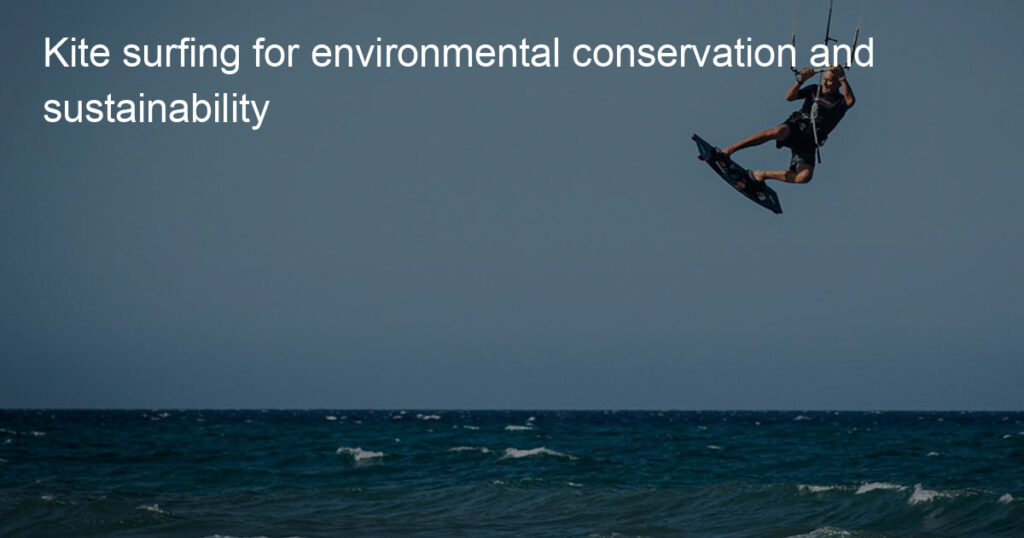Kite surfing is an exhilarating way to explore and traverse the ocean, while also promoting environmental conservation and sustainability. With a wind-power engine, kitesurfers can enjoy the thrill of riding on waves without releasing harmful emissions into our atmosphere. Surfing with kites helps reduce energy consumption and carbon emission levels while having a blast in nature’s playground!
Plus, men and women alike can take advantage of this sustainable form of exploration through both open water and land-based activities – no matter your level or experience. So what are you waiting for? Time to grab your board and harness the power of the wind!
Is kite surfing low-impact?
Kite surfing, also known as kiteboarding, is growing in popularity due to its exciting combination of windsurfing and parasailing. The good news is that it can be considered a low-impact sport – if you take the proper precautions. Many agree that kiteboarding is one of the most environmentally-friendly sports because it relies on harnessing natural resources such as wind and waves for propulsion.
With that being said, there are certain risks involved, such as rope burns or collision with other surfers. But with the right safety measures in place – choosing safe locations, weather conditions, and appropriate gear – you can enjoy this fun sport with almost zero negative impact on nature.
How does surfing affect the environment?
With the increasing popularity of surfing, it’s becoming more important to be aware of its environmental impacts. Surfing affects water pollution, as polluted coastal waters can become harmful to humans and marine life alike when surfers are exposed to them. Additionally, surfing can disrupt natural animal habitats, disrupt coastal vegetation, and lead to dangerous shoreline erosion if not done responsibly.
One way to help reduce these impacts is to use sustainable surfboards that are made from materials that help protect the environment rather than harm it. Taking care to clean up after using the beach and choosing environmentally-friendly waxes and other surf supplies can also help minimize our impact on nature when we take a ride in the waves.
What type of power do kite surfers use?
Kite surfing is a thrilling sport made even more exciting by its reliance on the elements. It is one of the few sports that requires both natural power sources and human energy, with kite surfers harnessing a combination of wind and wave power to get up on their boards.
Wind energy is used by kite surfers to generate lift from their kites, allowing them to launch themselves into the air. Wave power provides the rest of the propulsion required for movement across the water. Wherever you find wind and waves, you can find these adventurous athletes utilizing their version of clean energy!
How is wind energy good for the environment?
Wind energy is amazing for the environment — and not only because it’s a renewable source that never runs out. Using wind turbines to capture energy has a much lower carbon footprint than burning fuels like coal, oil, and natural gas.
That means we’re producing more energy with fewer pollutants that would otherwise be released into the air, helping to reduce acid rain, smog, and other harmful emissions. What’s more, the power from wind farms replaces electricity from fossil fuels which help us combat the impacts of climate change. Who knew something so simple could have such an incredible impact on our planet?
Why is it beneficial to capture wind energy with kites?
Kites have become an increasingly popular alternative to traditional turbines when it comes to generating energy from wind. Although they may seem like a modern invention, kite-based wind energy harvests go back to 14th-century China!
Kites are great for harnessing wind energy since they require much less material than that a conventional turbine, reducing associated construction costs. Being airborne means they can reach higher altitudes which results in higher conversion rates of wind energy into electricity – up to three times more efficient at certain heights than traditional ground-based turbines.
Perhaps most significantly, these kits take up far less space than a traditional set-up, so communities looking to capture the power of their local winds don’t need to worry about ruining the beauty of their local scenery or environment; plus, the better yield from occupying less space is always appealing. The wind is becoming an increasingly mainstream source of clean, renewable energy and kites offer a simple and cost-effective way to join this network!
Summary: Kite surfing for environmental conservation and sustainability
Kite surfing is an exciting and fun way to connect with the environment while contributing greatly to the cause of environmental conservation and sustainability. This extreme sport allows us to explore the natural world around us, and it’s a great adventure that’s accessible for all levels.
Plus, with its low impact on the environment and its potential for clean energy generation in coastal areas, kite surfing is a perfect example of how sports can be used to promote sustainability. Not only does kite surfing help us stay fit and have amazing summer adventures, but it also allows us to make a positive contribution toward conserving our planet’s future. Let’s all strive to support green sports like kite surfing so we can protect our planet while having as much fun as possible.








